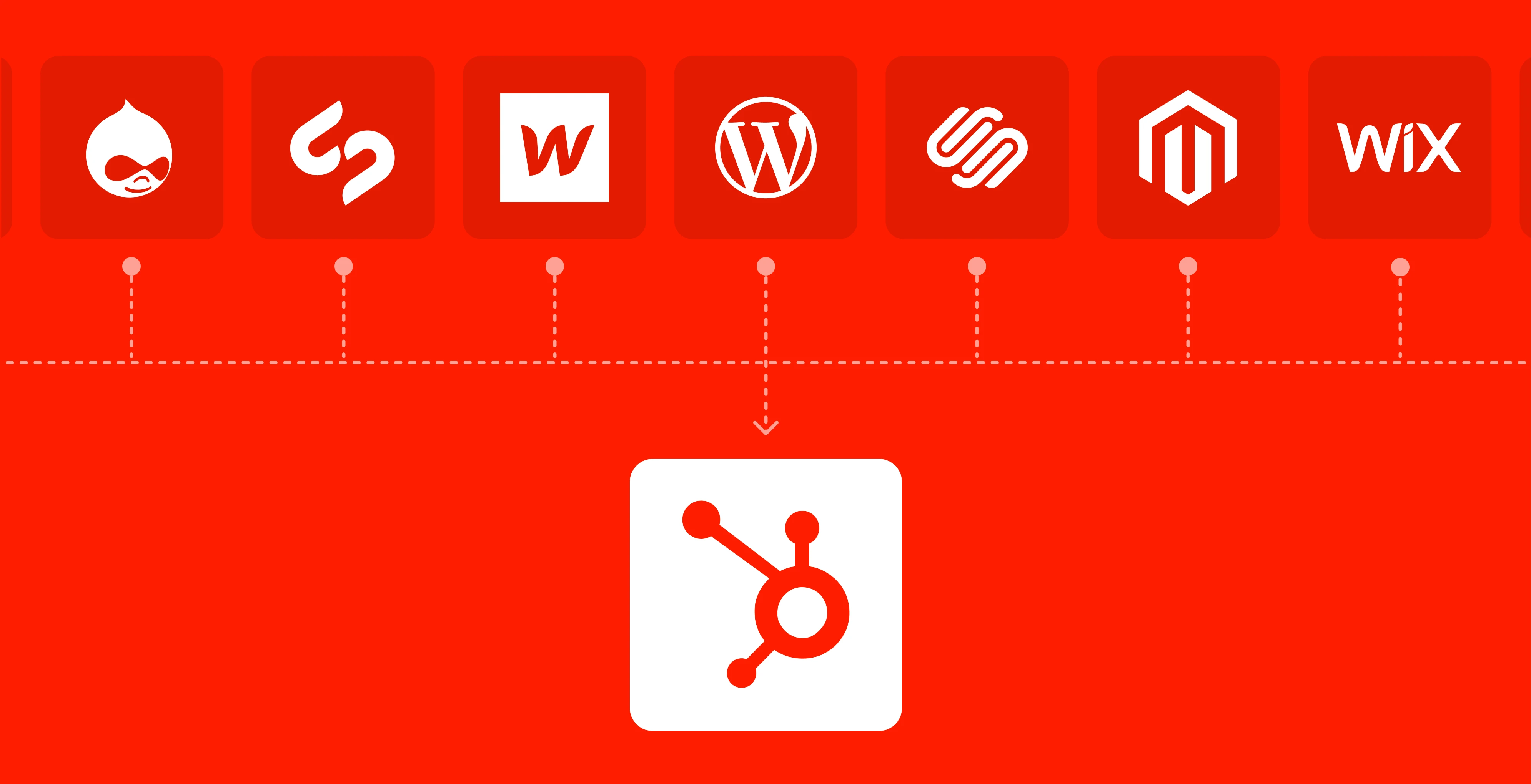Writing follow-up sales emails can be a tough task. Even if you think you’ve written a smashing cold prospecting email, there’s no guarantee that you’ll ever get a reply. It’s tempting to take the lack of reply as a final “no”. However, failing to follow up can cause you to lose as much as 98% of your potential sales. Imagine that.
Only an average of 2% of successful sales are made during the first point of contact. Furthermore, sending out at least one follow-up message can increase your average reply rate to 13%.
Why Follow-Up Emails Are Crucial
Most successful sales don’t happen only after one “touch”. In fact, it takes an average of eight touches before you can generate a conversion—top performers can generate conversions with an average of five touches. This is because they’re able to deliver more value in their communications.
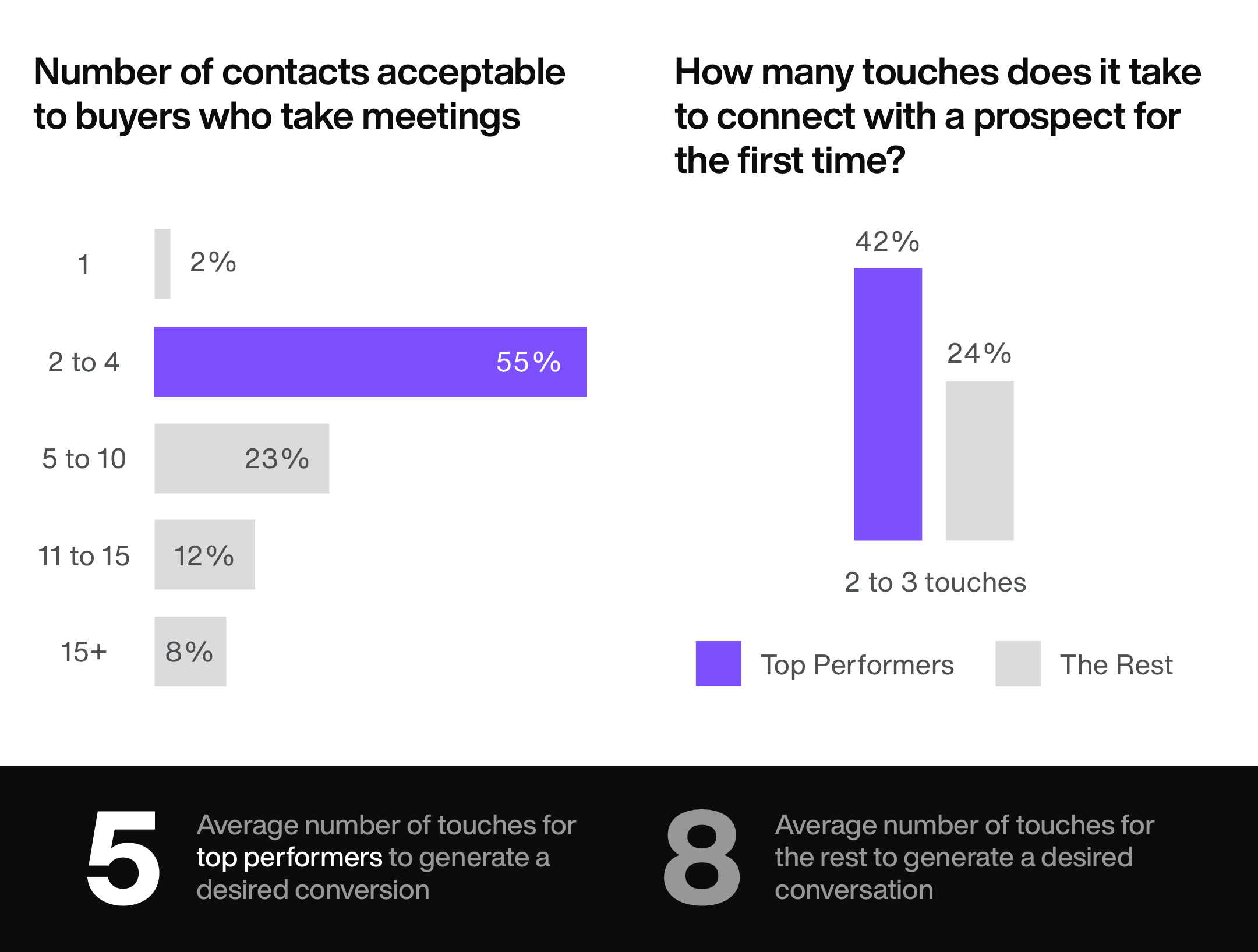
Source: RAIN Group Center for Sales Research
But why aren’t more sales reps sending out follow-up emails?
According to MarketJoy, some salespeople want to avoid coming across as pushy. They may also forget to send out follow-up emails, or it’s likely that they don’t realize just how important follow-up emails are.
However, persistence definitely pays off if you’re trying to grow your business and offer exceptional experiences to your customers. Persistent follow-up can help increase conversions and boost your sales. As much as 80% of sales need five follow-ups before you’re able to seal the deal. However, close to half (44%) of sales reps don’t follow up after being rejected once.
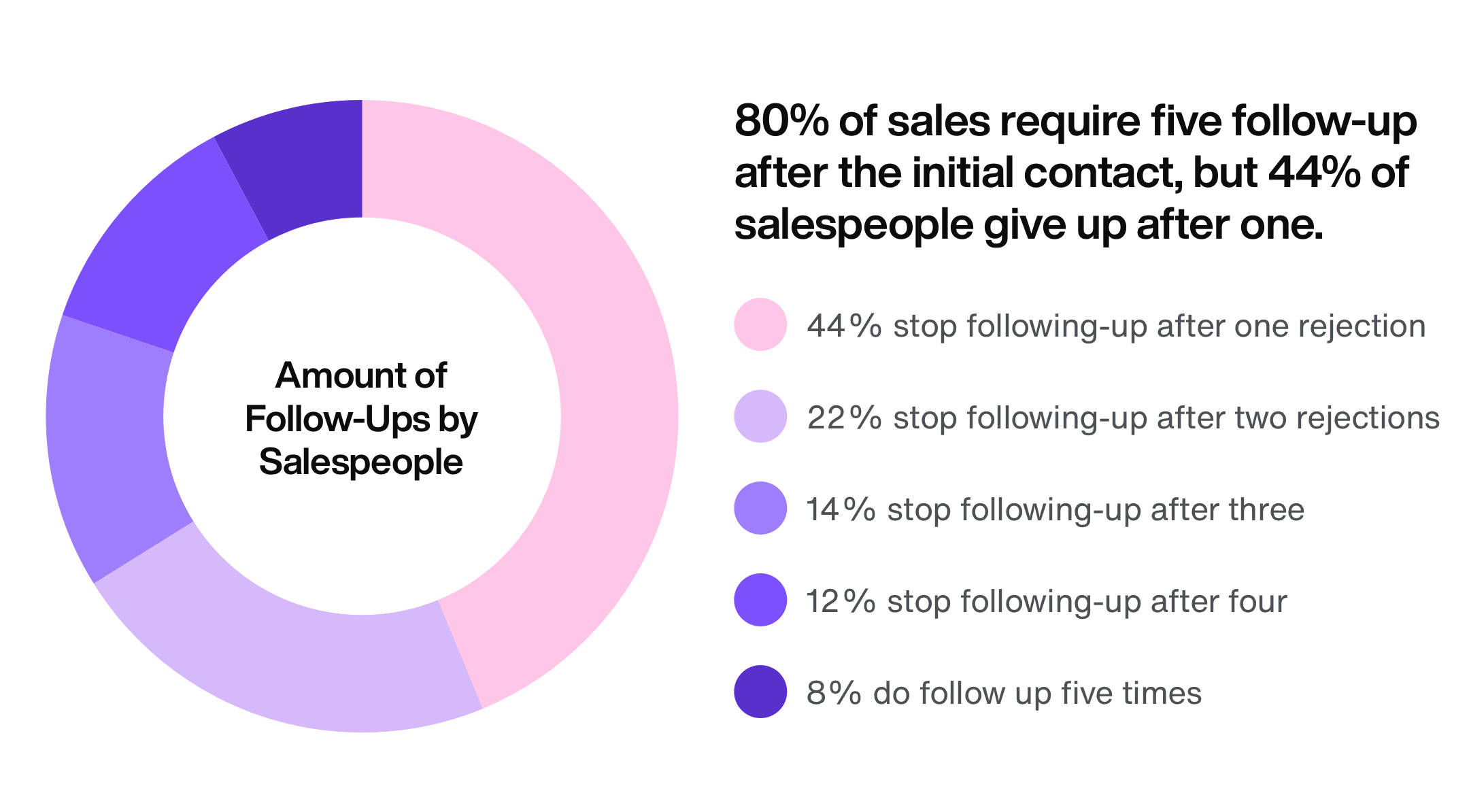
Source: Propeller
Additionally, sending follow-up sales emails can help you stand out and make it more likely for your prospects notice you. It also gives you more opportunities to listen to your customers, understand their pain points, engage them, and provide them with a relevant solution. It lets you build and strengthen your relationships with your prospects, plus allow them to know more about your business.
7 Tips to Write a Follow-Up Sales Email That Stands Out
Should you write a short follow-up email or should you go for a hyper-personalised one?
While it might seem counterintuitive, writing longer emails make more impact and are more effective in booking meetings, according to Gong’s Devin Reed. However, there’s a catch—your long email, which can span anywhere between 30 to 150 words or more, should offer value to your reader. Its message has to be clear and well-crafted, and it should contain all the relevant information that your prospect would need.
Reed goes on to say that “bubble-up emails” or short, general follow-up emails don’t work because it operates on the principle that your prospect has read and remembers what you had to say in your previous email.
So, how do you write follow-up sales emails that drive conversions?
1. Avoid These Tricky Words and Phrases
There are some words and phrases that you might think would help you drive conversions, but, in reality, they do the exact opposite. According to Reed, here are the common sales phrases that can affect your results:
-
“Thoughts?” – Asking your prospects for their opinion just to get a reply from them is a sneaky tactic, and it can decrease your chances of booking a meeting by as much as 20%.
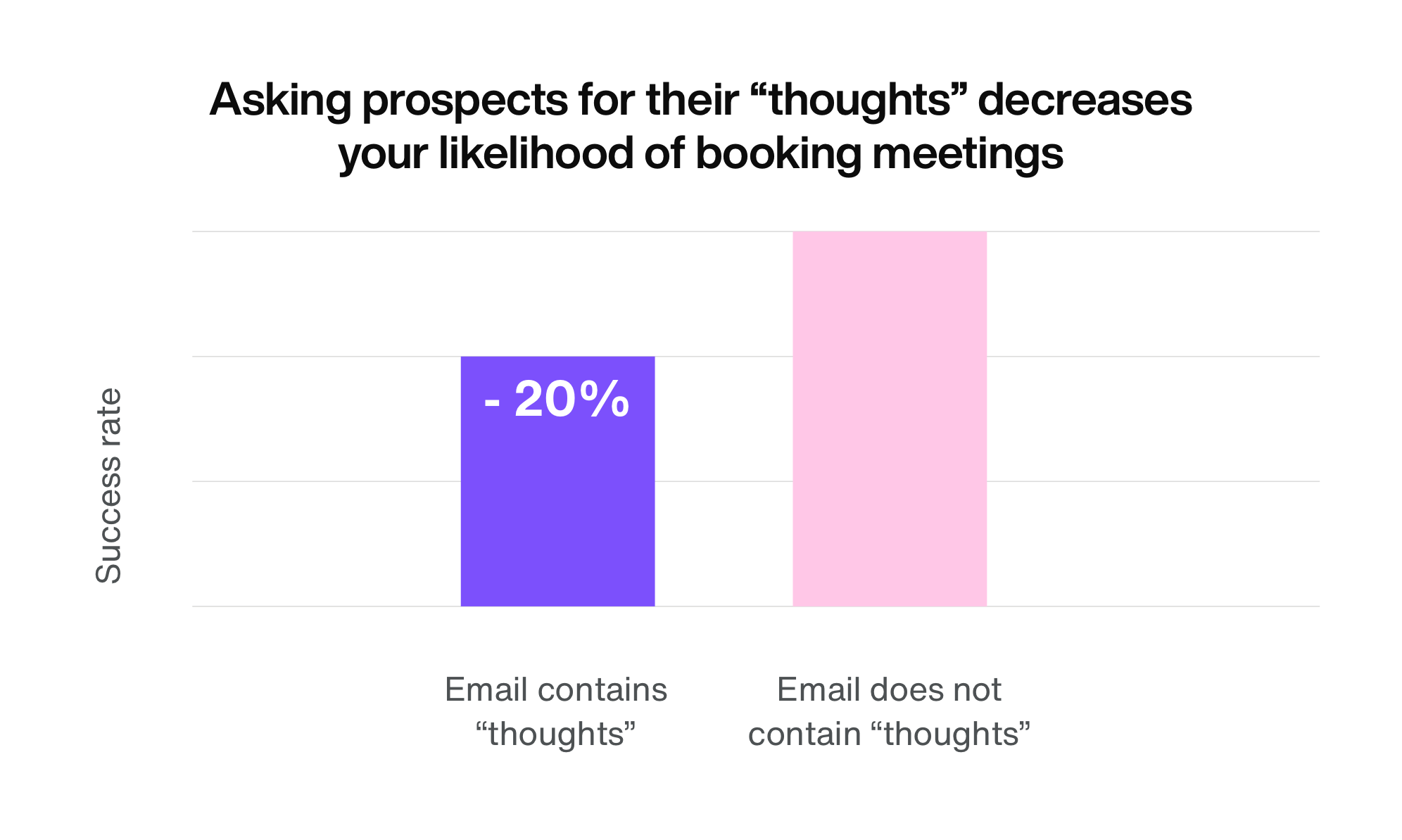
Source: Gong.io -
“Never heard back” and “Following up”– While this phrase can increase your reply rates, it can decrease your meeting bookings by 14%. These phrases can fuel guilt among your prospects and remind them of their previous decision of not replying to you. Similarly, the phrase “following up” can increase response rates, but it still hurts your chances of booking a meeting by a significant 5%.
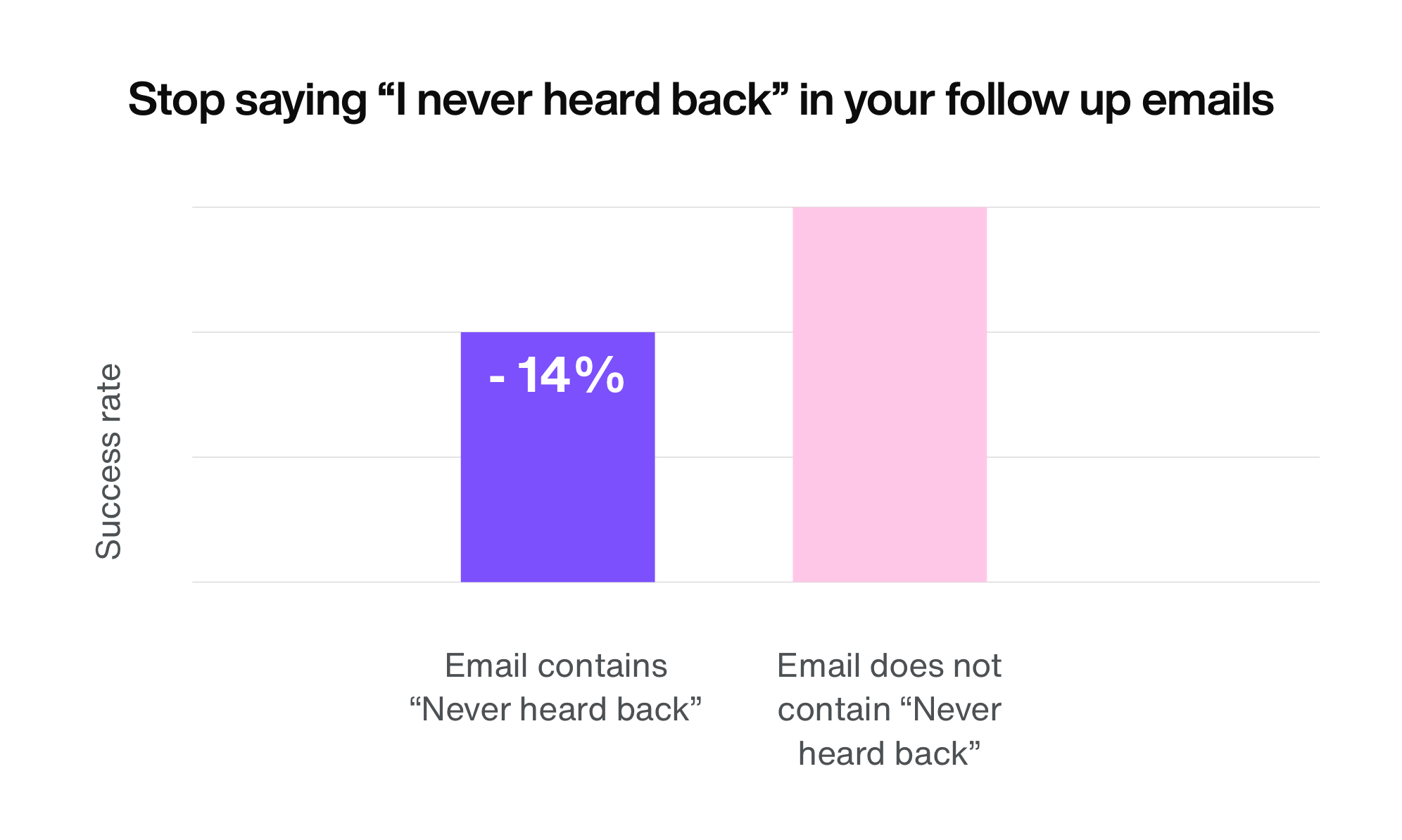
Source: Gong.io -
“Just called…” - This phrase doesn’t add anything into the conversation nor does it do anything to increase your chances of locking in a meeting with your prospects.
2. Craft an Attention-Grabbing Subject Line
Your subject line is the first thing that your recipients will read, and it needs to be compelling enough to get readers to open your message. Your subject line should be short—around 9 to 60 characters—and descriptive. Don’t know if your subject lines will work? Try testing them out via A/B or multivariate testing to see how each subject line can potentially influence your open rates.
3. Personalise Your Pitch
Do your research about your prospect. Find updates relevant to their industry or learn more about their recent developments. This helps you craft a personalised pitch. Additionally, you can use your subject line to make your readers feel that the email was made especially for them.
4. Create Context
Your follow-up email should have context. This way, you’re able to remind your audience about your previous email. Even if they won’t remember your previous email, it’s likely that they’ll have a positive response once they’re reminded that you’ve been in touch with them before. Aside from adding context, don’t forget to include a compelling call to action to make it easier for them to respond to your email.
5. Pique Their Curiosity
Get your audience to read the rest of your email by sparking their curiosity. You can ask a relevant question or share some interesting or up-to-date stats. You can also add that you’re sharing valuable tips. Your subject line should give them an idea of what to expect, but remember—don’t give everything away yet. Just entice them to read the rest your email.
6. Clickbait Is a Big No-No
Whether it’s a YouTube video title or an email subject line, using a clickbait is taboo. Your follow-up email subject line should be realistic and honest. It should also promise only what your email contains.
7. Leverage Psychology
Using psychology can help you meet the goals of your follow-up email. You can apply techniques like including social proof from happy customers. You can also include percentages if you’re referring to promotions or deals in your email.
Craft Follow-Up Sales Emails That Drive Results
Get the resources you need to grow your brand and create unforgettable experiences for your clients. Discover how ThirtyFour Creative can help you leverage HubSpot CRM to drive growth and get real results.



